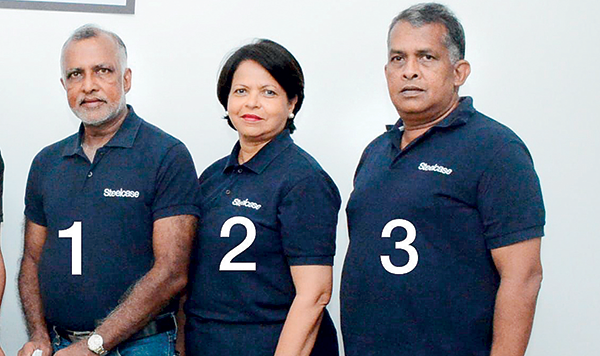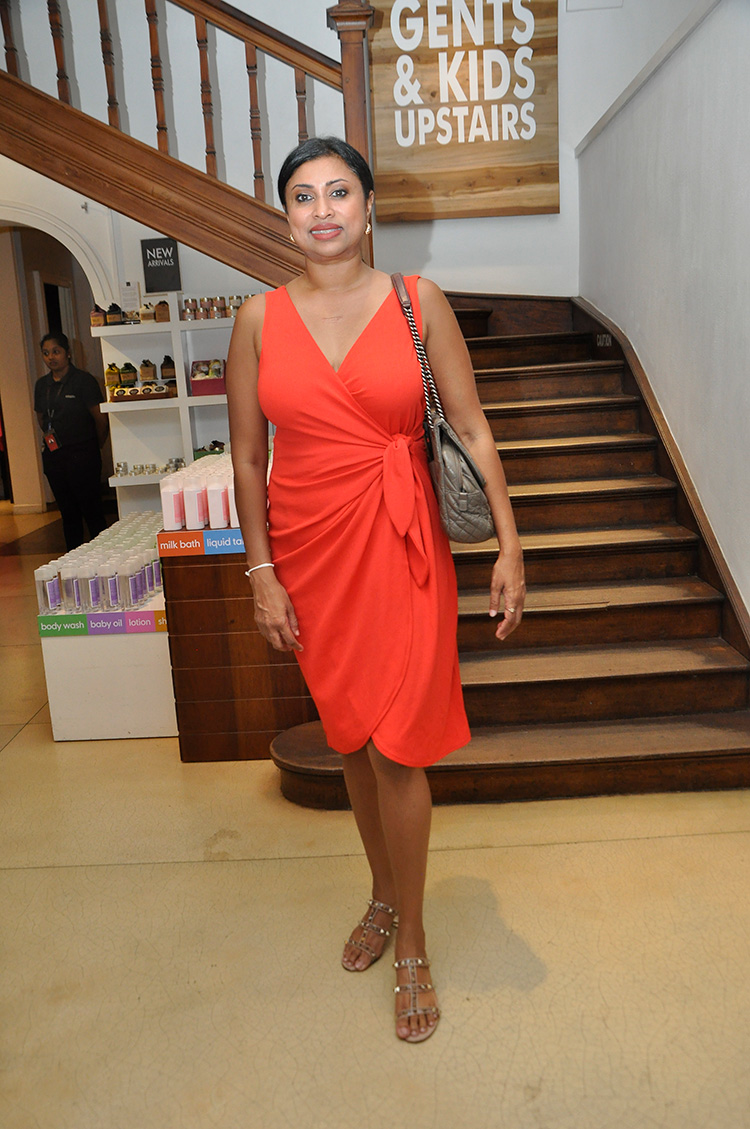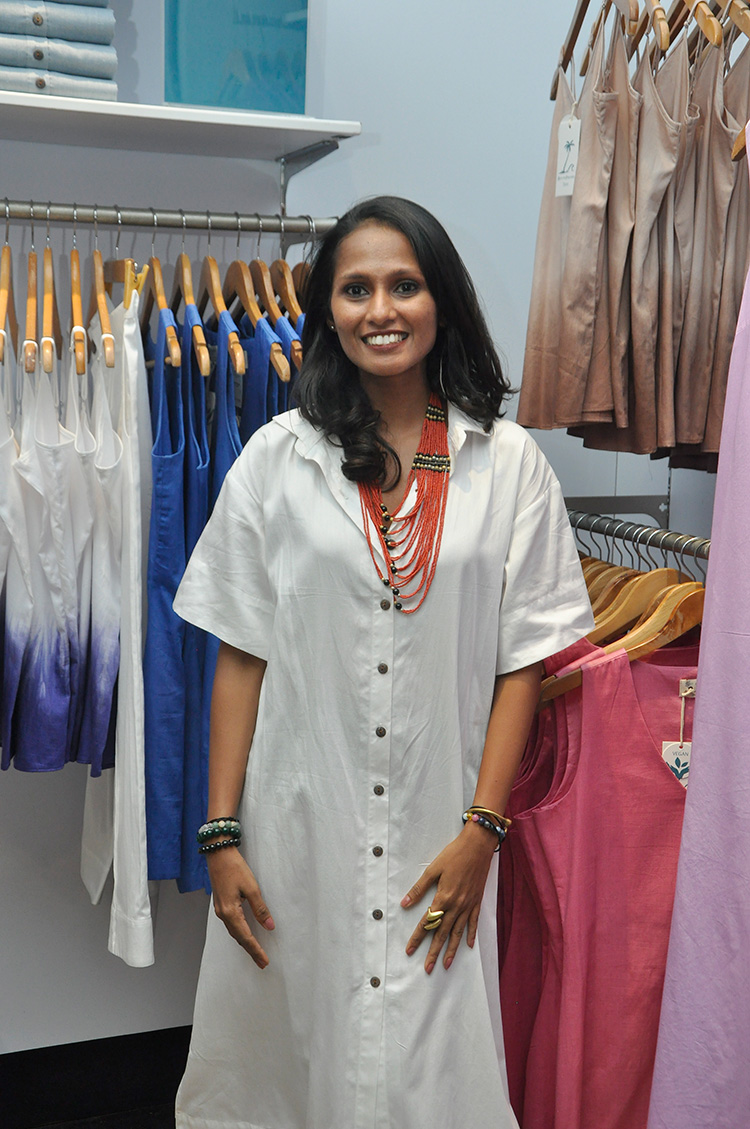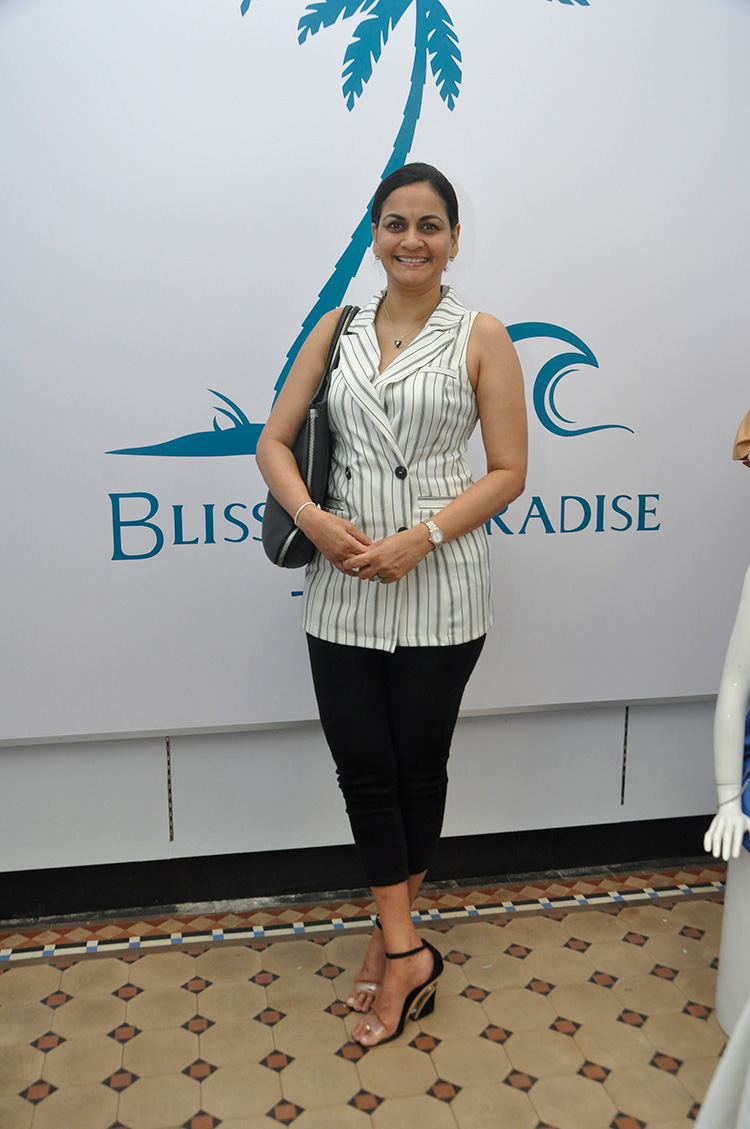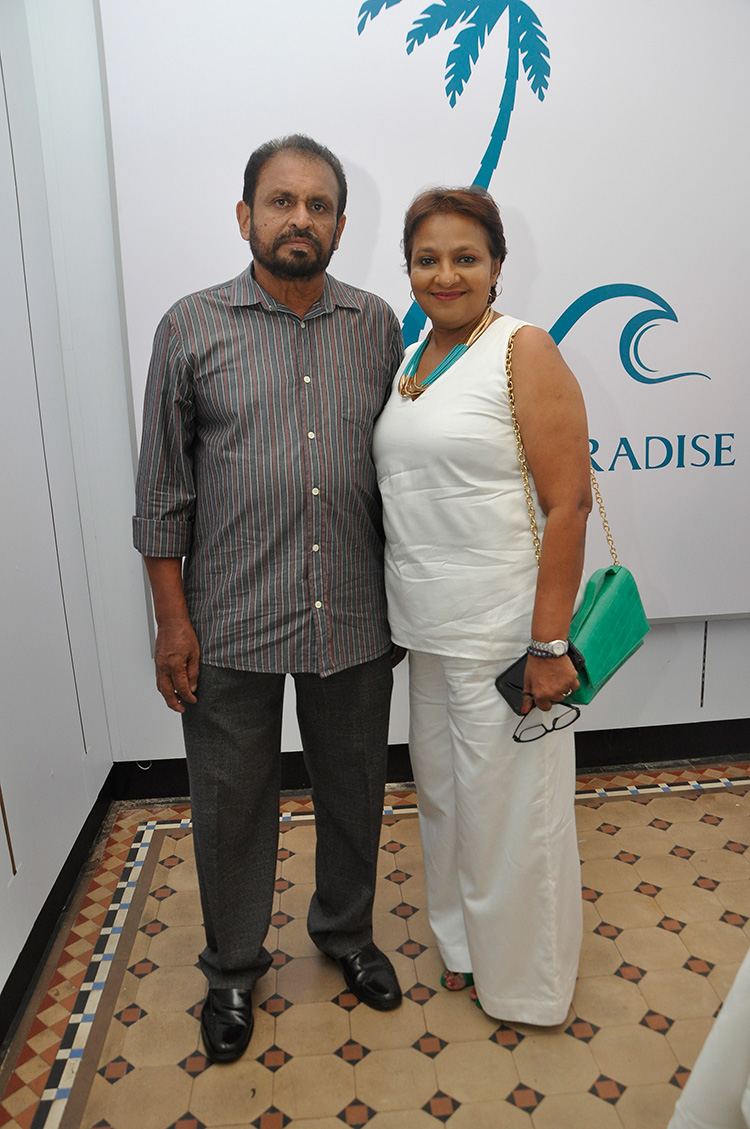Fashion
Modern and contemporary styles in keeping with today’s trends
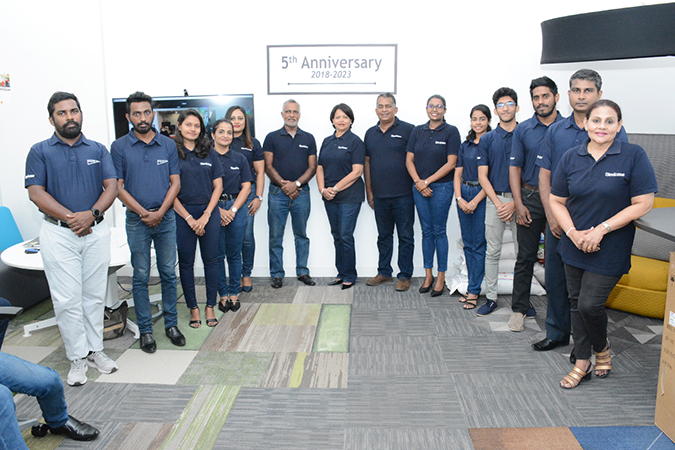
Managing Director of Widac Commercial Interiors, Chandi Alles is a pioneer in the field of Design. She started her career in New Zealand and returned to Sri Lanka at which point Widac ventured into offering its clients a total interior solution from design to fit out.
at which point Widac ventured into offering its clients a total interior solution from design to fit out.
Steering Widac’s Projects Division, the Company has participated in many exhibitions and have won prestigious awards locally and internationally.She has an experience of 30 + years in the industry, and has been involved in working with clients that span over all segments of businesses in the commercial sector. Her passion for designs has helped to transform spaces to functional and practical working environments.
To mark 50th anniversary of partnership with Steelcase,Widac organised a CSR project to distribute wheel chairs prostatic legs and dry rations to the needy.
(Q) Your multi-faceted design firm not only deals with design but handles manufacturing of unique detailed products as well. Could you elaborate your unique design philology and how it reflects the key works done by your firm?
(A) Our designs are based mainly on modern and contemporary styles in keeping with today’s trends reflecting the business of the client. As such we work with processed timber and engineered surfaces which can be transformed to bring out unique creativity.
(Q) What made you opt for designer as a career. How has your work evolved over time?
(A) I enjoyed creative work from a very young age and when I went to New Zealand had the opportunity of working with an experienced designer. Her inspiration and my interest in “Design” created a career path for me. I have enjoyed 35 years of work to the fullest, and I gain satisfaction when I saw my creativity transformed into reality.
(Q) Luxury does not mean fancy construction materials or flamboyant installation but spaciousness, diverse usability and availability of options.Your opinion?
(A) Agree to your statement. Luxury can be achieved with less expensive materials. Use of colour , lighting and texture are key elements for the final product.
(Q) What in your opinion what are some of the loopholes that the designers get trapped in while designing luxury projects?
(A) Limitation of materials available at present in the market
(Q) A project close to your heart why?
(A) All projects are close to my heart as each and everyone is given a lot of time from start to finish. Being in love with my work is always the key to achieving better results
(Q)Your most challenging design project? Share the challenges and how you overcame them?
(A) Practicality is fundamental in my design. The biggest challenge I have had is to achieve precision in the final product. Design is a way of living,enjoying lifestyle to the fullest is my forte.
(Q)What is your dream project?
(A) Convert a complex that looks rather rundown to the best making it an icon for others to admire
(Q) How do you combine beauty and function? What do you see for the future of design?
(A) Beauty can be achieved with the correct use of materials, colour and light Nevertheless day to day maintenance needs to be considered as well to let the “beauty” last!
(Q) What are you working on at the moment?
(A) A VIP Lounge and Staff Cafeteria in a Commercial Building
(Q)What is your favourite project date and why?
(A) Etisalat – A well known name in the Telecommunication Industry. Dates back to a decade. It’s considered favourite for reasons below
a. Total design and build was by WIDAC
b. The first in the country to depict the same “Concept” of the Flagship Store and other forty outlets
island wide
c. The 40 outlets that it is spread out in the country were completed in one year.
d. Gave us real satisfaction to see our work showcased in main cities and little towns through out Sri Lanka
(Q)What fuels you to do what you do every day?
(A) I need constant excitement and challenges in my work to keep me motivated. I take pleasure in working on turnkey projects which are fast-paced; also anything stereotypical and conventional brings boredom.
I am highly passionate about what I do. There were times when I was not very enthusiastic about some things, but I worked on it by discovering small ways to keep the level of excitement high. Despite the challenges, the show must go on!
(Q) What is your definition of success?
(A) Success is subjective. According to me, it means having a name, fame, recognition, and appreciation for the work done. To have made it in the industry without anyone to endorse me has been my mark of success. I also believe that being able to grow and adapt to the trends and to evolve, yet staying afloat despite hitches, is a success. Although the monetary aspect plays an important role, hard work and honesty are something to be treasured.
(Q) What advice would you give to professional women?
Working women need to be respected as they are the embodiment of the art of balancing work, home, their lives, everything.
(A) I believe that time management is essential to being an organized person, so delegating and outsourcing must be made use of wherever possible.
More importantly, love and trust yourself, also be motivated by setting aside some time for self-care and enjoyment with friends. Learn to laugh and to let go, as there are some situations that are beyond your control and you cannot please everyone. Furthermore, never ever compromise on your self-respect and dignity, because you are worth a lot more than you think.
Fashion
French model Ines in Sri Lankan spotlight

By Zanita careem
Modelling is sometimes an undiscovered and unknown way, it might be something that you have dreamed about and to your surprise you are destined to that route.This statement holds so true for Ines, a model from France, she is a model and she knows how to nail it. Ines believes in uniqueness and the moment the camera turns on she is there to give that unique and perfect shot. Her styling secret is to go elegant yet comfortable.Ines loves to work hard to be the perfect one out there and this could be something that could really motivate and inspire other people.
Q: Tell us a little about you and what was life growing up?
A: I’m Ines, born and raised in Paris with a family rich in values, primarily emphasizing independence and an entrepreneurial spirit.
I’ve had a passion for traveling ever since my mother took my brother and me on a year-long world tour when I was 12. Since then, I’ve pursued my studies in hospitality management online, and my journey led me to Sri Lanka, where I’ve been living for five years now.
Meeting people has helped me practice languages, and after traveling to more than 20 countries, I speak 4 languages including Sinhala. I live in the southern part of Sri Lanka where nature, tranquility, and the sound of the ocean reign.
Q: How were you discovered and how has your journey being so far?
A: As a hospitality student during the COVID lockdown, I was approached by clothing brands to work as a model. Prior to moving to Sri Lanka, I had done photo shoots for friends’ brands and especially for my mother’s jewellery line, but I never imagined having a professional career in this field.
I embrace challenges and seize new opportunities, hence I embarked on a career in modelling, which grew to such an extent that I established my own company as a freelance model. Additionally, as a dancer and artistic director, I also work on creative concepts that go beyond the typical photo shoots in Sri Lanka.
Q: Have you always had a passion for fashion and modelling?
A: I discovered this passion when I began posing in front of a camera. As a child, I always enjoyed shopping and dressing up, but I never imagined it would become my profession, especially since I struggled with my weight when I was younger. I believe that nothing in life happens by chance, and if I have fallen in love with Sri Lanka, it is for a reason. This country is full of opportunities; one simply needs to work hard and stand out from the rest.
Q: Biggest hurdle what are some obstacles you faced?
A: I do not encounter specific obstacles in my professional career, but my weakness lies in my sociability. I need to continue working and managing my energy and preserving it for projects that truly bring me happiness. Given the high level of tourism in the southern part of the country, interactions are plenty but can be challenging.
Q: Some latest and up coming projects?
A: The latest project I am currently working on is establishing a career in content creation. I aspire to express and unleash my creativity while collaborating with brands and hotels that hold significance to me. A future project that I have dreamt of for a long time is launching my own clothing brand… but everything takes its own time…
Q: Top tips that keep you looking youthful?
A: Appearing young is of no importance to me; what truly matters is feeling comfortable in one’s own skin and being happy. Youthfulness is largely defined by attitude and energy. What brings me happiness is my family, projects, travels, dancing, and surfing.
Q: What are some of the pros of being a model?
A: The benefits of being a model include constantly being on the move and sometimes even travelling. Additionally, I am deeply grateful for the attention and care that teams provide; it makes me feel like a princess. Representing a brand or company also fosters self-confidence and gratitude.
8. Q: If you could change anything about the fashion industry, what would it be?
A: If I were to change something in the fashion industry in Sri Lanka, it would be to encourage brands to be more creative and accept models of diverse body shapes. Moreover, it’s crucial for them to recognize the beauty of the majority of the population’s natural, dusky skin tones. It’s time to dispel stereotypes associated with fair skin. Sri Lankan dusky skin is beautiful, and it’s imperative to stop labelling it as inferior to fair skin.
Q: What is your mantra?
A: My life philosphy is one of positivity towards everything I do and everything that happens to me. There is always a lesson to be learned
Q: Some of your favourite designers?
A: My favourite designer is Kami Hewavitharane and a brand labelled the Colombo Batik brand.. This brand produces unique and colorful designs and thier collections are breathtakingly beautiful.
Q: If you weren’t a model what would you be?
A: In addition to my career as a model, I work as a manager in hospitality and restaurant management. It’s one of my passions. Otherwise, I would have liked to pursue a career as a professional dancer, but it requires years of practice.
Q: So, has your perception of the fashion industry changed over time?
A: My perception of the industry has not changed much, but I feel now the industry has moved forward for the better. There is originality and creativity amongst most of the designers, and I see an increasing number of women venturing into it, which pleases me.
Q: What was the most important moment in your life?
A: What a difficult question haha! So many beautiful moments, and even the tough ones, have contributed significantly to my growth and evolution. However, the most crucial moment was staying in Sri Lanka despite the COVID conditions and France’s requirement for expatriates to return. I stayed back and took up challenges to pursue my own brand.
Q: What do you think about the state of fashion today?
A: I believe that the state of the fashion industry in Sri Lanka is undergoing significant evolution, with Sri Lankans becoming increasingly independent, liberated, and enterprising.
Fashion
Black dress-versatatile and timeless
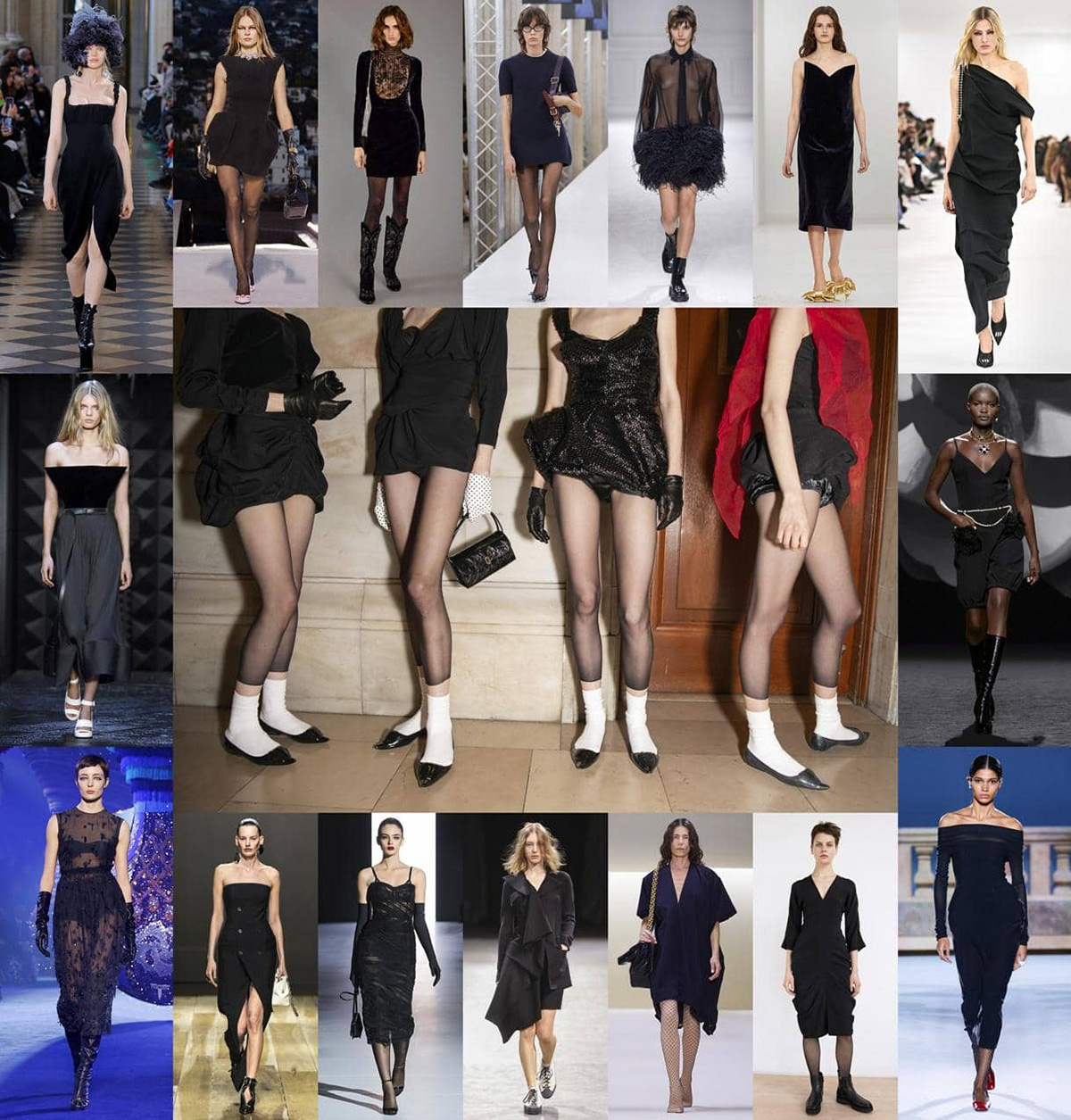
 The little black dress plays such a starring role in our wardrobes that it has its own special designation: the LBD. Vogue’s Hamish Bowles takes us through its history, decade by decade, from Coco Chanel to Cushnie on black dress.
The little black dress plays such a starring role in our wardrobes that it has its own special designation: the LBD. Vogue’s Hamish Bowles takes us through its history, decade by decade, from Coco Chanel to Cushnie on black dress.
It’s Mademoiselle Chanel who is credited with popularizing the look and, in doing so, making the colour black, previously worn only when in mourning or to express piety (as in ecclesiastical garb), fashionable. In 1926 Vogue dubbed a drawing of one of her snappy, drop-waisted LBDs, “The Chanel ‘Ford’—the frock that all the world will wear.”
They did, and do—men have recently gotten in on the game—though not all carry the Chanel label. In the 1950s, Christian Dior defined the look of the LBD: full-skirted and wasp-waisted. The little black dress Hubert de Givenchy designed for Audrey Hepburn in the movie Breakfast at Tiffany’s is as representative of the early 1960s as Yves Saint Laurent’s sheer, feather-trimmed number of the latter part of that iconoclastic decade.
Cocktail dresses and LBDs, which are defined by their short(ish) length, are often one and the same. One of the reasons neither will ever go out of style is that there are myriad ways to play “mixologist” with the spare, neat LBD to give it just the kick you want. Cheers!
The little black dress plays such a starring role in our wardrobes that it has its own special designation: the LBD.
In 1926 Vogue dubbed a drawing of one of her snappy, drop-waisted LBDs, “The Chanel ‘Ford’—the frock that all the world will wear.”
From the moment Coco Chanel presented it to the world in the 1920s, the eternal dress became a canvas that almost every designer wanted to weave something of their own into. Although it has moved away from its basic principles, the little black dress has retained the same charm and the same note of seductiveness it once had, and new variations, as with every season so far, also graced the runways in the fall/winter 2024 collections.
Ultra-short models shone on the runways from Tom Ford, Schiaparelli, Givenchy, Giambattista Valli to Ferragamo, as well as many others, proving once again that the little black dress is a garment that will function in every collection and that will, ultimately, also surely be worn. Although the models of these fashion names differ and each has brought their own vision to the iconic dress, what they have in common is that they all serve as a good reminder that the charm of the little black dress does not fade and that we will always return to it, precisely because it is so timeless and versatile.
From the moment Coco Chanel presented it to the world in the 1920s, the eternal dress became a canvas that almost every designer wanted to weave something of their own into. Although it has moved away from its basic principles, the little black dress has retained the same charm and the same note of seductiveness it once had, and new variations, as with every season so far, also graced the runways in the fall/winter 2024 collections.
Ultra-short models shone on the runways from Tom Ford, Schiaparelli, Givenchy, Giambattista Valli to Ferragamo, as well as many others, proving once again that the little black dress is a garment that will function in every collection and that will, ultimately, also surely be worn.
Although the models of these fashion names differ and each has brought their own vision to the iconic dress, what they have in common is that they all serve as a good reminder that the charm of the little black dress does not fade and that we will always return to it, precisely because it is so timeless and versatile.
Fashion
Groundbreaking new collection from Vegan fabric

At a very young age Thushani Rodrigo discovered her love for fashion. An entrepreneur and a fashion designer, she loves to create clothes and garments for people to wear with pride.
 Sri Lanka’s fashion landscape is about to experience a transformative shift as Thushani Rodrigo, the visionary founder of Todos, introduces Bliss in Paradise her latest collection with the inspiring ethos, “Wrap Yourself in Kindness.” Under the theme “Fashioning Tomorrow,” Thushani’s collection invites individuals to embrace Vegan Silk as a symbol of kindness towards animals and the environment.
Sri Lanka’s fashion landscape is about to experience a transformative shift as Thushani Rodrigo, the visionary founder of Todos, introduces Bliss in Paradise her latest collection with the inspiring ethos, “Wrap Yourself in Kindness.” Under the theme “Fashioning Tomorrow,” Thushani’s collection invites individuals to embrace Vegan Silk as a symbol of kindness towards animals and the environment.
The ethos “Wrap Yourself in Kindness” embodies the essence of Thushani’s collection, emphasizing the importance of compassion and sustainability in fashion. Through the use of Vegan Silk, derived from eco-friendly plant sources, Thushani encourages individuals to adopt a lifestyle of kindness towards animals and the planet.
Despite facing a hearing impairment, Thushani Rodrigo’s passion and determination have propelled her to remarkable heights in the world of fashion. At the age of 16, she earned her Diploma in-Dress Making from Singer School, laying the foundation for her entrepreneurial journey.
Today, Thushani stands as a beacon of innovation and sustainability in the fashion landscape. Her latest venture, which will be retailed at Cotton Collection underscores he- unwavering commitment to ethical fashion practices and environmental responsibility.
Vegan silk, also known as “plant-based silk” or “cruelty-free silk,” serves as the cornerstone of Thushani’s groundbreaking collection. Derived from sustainable plant sources, Vegan Fabric offers a sustainable and animal-friendly alternative to traditional silk.
Thushani’s designs, meticulously crafted from Vegan Fabric, embrace the female form while seamlessly blending sensuousness with practicality.
The launch of Thushani Rodrigo’s Vegan Fabric Collection with Cotton Collection heralds a new era of sustainable fashion in Sri Lanka. By embracing cruelty-free materials and ethical production practices, Thushani paves the way for a more conscious and compassionate fashion industry.
Join us in celebrating this monumental milestone in sustainable fashion as Thushani Rodrigo and Cotton Collection redefine the future of style with their innovative Vegan Fabric Collection.
For media inquiries, please contact: Ruwanthi Rodrigo 0777660477
- Talented Tushani Rodrigo
Pix by Thushara Attapathu

